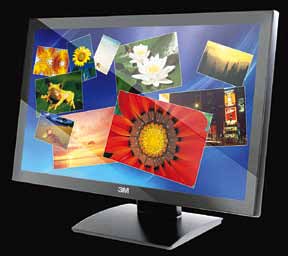Performance matters—everywhere
While touch has been throwing its weight all over the display scene, other factors such as resolution and display performance also continue being points of innovation. The issue of performance, for instance, is being dealt with from varied angles—right from the material to the chip and the software.
One interesting example is the Corning Lotus Glass technology unveiled last year. The ecofriendly, high-performance display glass has been developed to support the demanding manufacturing processes of both organic LED displays and LCDs for high-performance, portable devices such as smart phones, tablets and notebook computers. It performs exceptionally well in low-temperature poly-silicon (LTPS) and oxide TFT backplane manufacturing environments.
“Corning Lotus Glass has a high annealing point that delivers the thermal and dimensional stability our customers require to produce high-performance displays,” said Andrew Filson, worldwide commercial director, Display Technologies, and vice president, Corning Holding Japan GK, in a press report. “Because of its intrinsic stability, it can withstand the thermal cycles of customer processing better than conventional LCD glass substrates. This enables tighter design rules in advanced backplanes for higher resolution and faster response time.”
To keep pace with the demand for performance, this year 3M also announced a few high-performance multi-touch displays that extend tablet-like responsiveness to larger, interactive displays. The 61cm (24-inch) M2467PW and the 69cm (27-inch) M2767PW feature brilliant high-definition graphics powered by LED backlights, wide viewing angles and elegant smart phone-like product design. The M2467PW can recognise up to 20 simultaneous touch events. The M2767PW with ultra-fast 40-touch capability is ideal for multi-user applications such as digital signage and product selectors.
Based on 3M’s Projected Capacitive Technology (3M PCT), these multi-touch displays offer the unique ability to recognise and reject the user’s palms or arms resting on the touch screen to help prevent inadvertent touches while also maximising multi-touch functionality. A 3M-proprietary anti-stiction surface treatment allows the user’s fingers to effortlessly glide across the screen for smoother gesturing and accurate draw capabilities.

Microsoft never stands out of any race! This March, researchers at Microsoft claimed to have developed a touch screen display that improves touch screen latency by a factor of 100. Current touch screen displays have an input latency of about 100 ms, which is responsible for the delay we notice between giving the input and seeing it on screen. In a video demonstration, a Microsoft researcher showed a 10ms latency screen that changed the delay of a movable virtual object on the screen to a rubber band impression. This was followed by a 1ms delay version, in which the delay was barely perceivable. However, the company also made it clear that this is still a ‘technology’ and will take many years before it becomes a product.
Sun-screen, anybody?
Readability in sunlight is an important parameter for comparison of mobile device models these days and justly so. This requirement holds even for outdoor displays used for events or promotions.
To improve visibility in sunlight, some general guidelines are that a sun-readable display should be bright enough to be clearly visible under direct sunlight. Its display contrast ratio should also be high. Generally, the screen brightness is of the order of 1000 nits and the contrast ratio is at least 5:1. Plus, some technology should be used to avoid the glare.
Some companies use the combination of a standard display, an enhancement film applied on the internal screen to optimise brightness and contrast, and a polarising film applied on both sides of the touch screen to minimise reflection. The anti-reflective coated protection glass minimises the mirror image and maximises transmittance, while the anti-glare coated protection glass scatters light directed on the surface and softens the image of direct light sources.
Pixel Qi’s transflective technology is one such technology worth watching. It uses a special layer that acts like a partial mirror—part of it transmits the light while the rest of it reflects the light.
One industry expert writes: “It’s like a typical mirror layer found in most displays but with holes punched out in it. This allows for a composite mode where users can adjust the backlight and still see the LCD screen with reasonable brightness.”
This transflective LCD is viewable under all lighting conditions including direct sunlight regardless of the LCD’s original brightness. Also, because the LCD pixels are reflective, the user can turn down the brightness level and save on battery power consumption.










